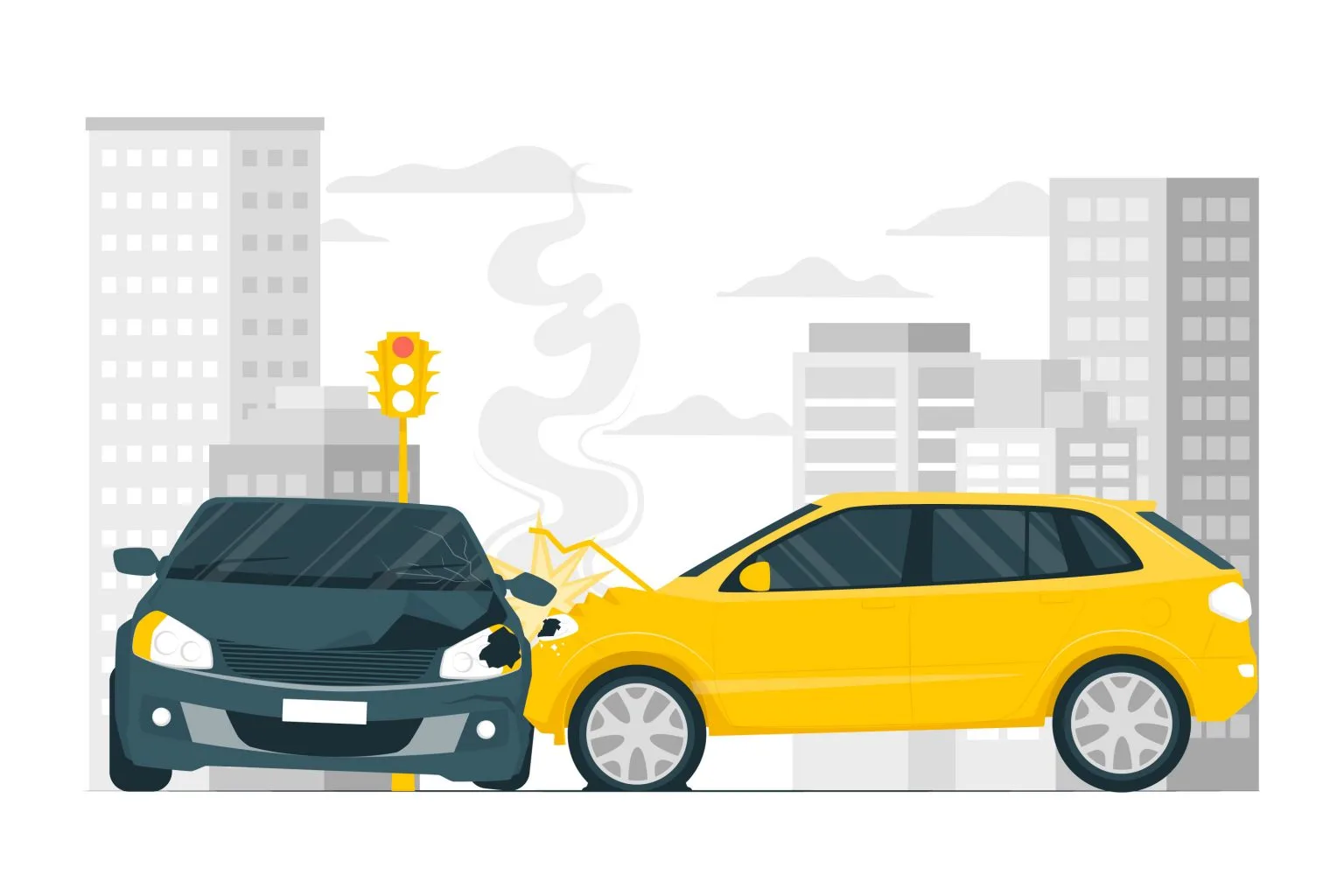4 minute read
The little protection offered by vehicle doors makes T-bone collisions, sometimes called side-impact collisions, one of the most severe kinds of auto accidents. When such accidents occur, determining fault becomes a crucial aspect, impacting legal proceedings and insurance claims.
If you are injured in a T-bone car accident, it is important to understand the complications involved in determining fault.
Understanding T-Bone Accidents
Definition
When two vehicles crash in a shape resembling a “T,” the collision is known as a T-bone. These collisions frequently occur at intersections when a car runs a red light or fails to give the right of way.
Common Causes
Factors contributing to T-bone accidents include
- Distracted driving
- Speeding
- Failure to obey traffic signals
- Impaired driving
Such collisions can result in severe injuries or even fatalities, highlighting the importance of determining fault accurately.
Determining Fault in T-Bone Accidents
Importance of Determining Fault
Assigning fault in T-bone accidents is essential for legal and insurance purposes. Medical costs, auto repairs, and missed income can be recovered by finding the liable party.
Challenges Faced
Determining fault in T-bone accidents can be challenging due to conflicting testimonies, a lack of eyewitnesses, and limited physical evidence. Additionally, the severity of injuries sustained by the parties involved may affect their ability to recall the events accurately.
Factors Considered in Determining Fault
Traffic Laws
When assigning blame in T-bone collisions, traffic laws are quite important. For instance, if one driver ran a red light and caused the collision, they would likely be deemed at fault.
Vehicle Damage and Positioning
Examination of the vehicles involved can also provide valuable insights into the sequence of events. The point of impact, damage patterns, and skid marks can help determine which vehicle had the right of way.
Witness Testimonies
Eyewitness accounts can provide valuable evidence for determining fault. However, their credibility and objectivity may be questioned, particularly if they have a personal relationship with one of the parties involved.
Police Reports
Police reports are essential documents that contain details about the accident, including any traffic violations committed and the officer’s opinion on fault. However, they may only sometimes be accurate, and their findings can be contested in court.
Role of Insurance Companies
Procedures Followed
Insurance companies follow specific procedures to determine fault, including reviewing police reports and witness statements, inspecting vehicle damage and medical records, and conducting investigations.
Comparative Negligence
In some cases, both drivers may share the blame for the accident. In such situations, insurance companies may use the concept of comparative negligence to assign percentages of responsibility to each party.
Legal Implications
Contributory vs. Comparative Negligence
In states that follow contributory negligence laws, a party found to be even one percent at fault may not recover compensation from the other party. In contrast, comparative negligence states allow for partial recovery based on the assigned responsibility percentage.
Role of Personal Injury Lawyers
Personal injury attorneys can assist victims of T-bone collisions in navigating convoluted legal processes, gathering proof, and negotiating with insurance providers to pursue just compensation for their injuries.
Be Informed!
Determining fault in T-bone accidents involves various complexities due to the severity of injuries sustained, a lack of concrete evidence, and conflicting testimonies. To preserve their rights and pursue just compensation, the parties must be aware of the elements taken into account when determining who is responsible and seek the advice of a personal injury attorney.
Aside from adhering to traffic laws, avoiding distractions while driving, maintaining a safe speed, and other measures may be taken to prevent these kinds of accidents. Thus, to prevent catastrophic collisions, drive carefully as per the law.
Let’s collaborate to make everyone’s journey a safe one. Recall that everyone bears some responsibility for safety.






